
Police Air Support “Sooner” Style

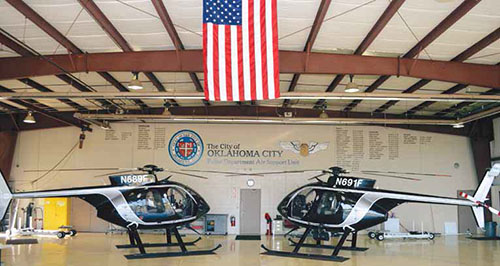
As the sun rose over the prairie on the morning of April 22, 1889, 7,000 eager settlers stood impatiently along Kingfisher Creek, waiting for the sound of the gun that would open central Oklahoma to homesteaders. In just the short time span of noon to nightfall, the settlers staked their claim to the unassigned land. “It was a great day to commence the building of an empire,” wrote one chronicler several years later. Staking their claims on land that became Oklahoma City, these “Sooners” began the process of carving a civilization from the wilderness. From a barren, unpopulated prairie on the eve of the run, more than 5,000 settlers founded the town of Oklahoma City in a single day.
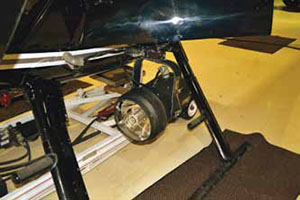
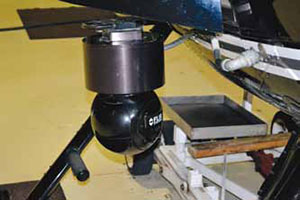
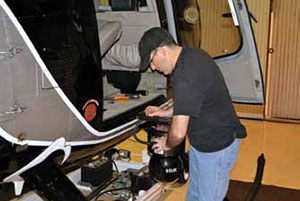
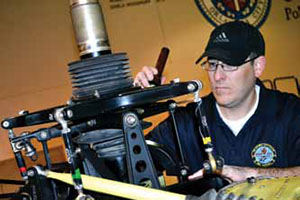
A municipal government was established quickly in the new “Town of Oklahoma.” In the area below Grand Avenue, the town of South Oklahoma was formed and stretched south to the North Canadian River. This secondary town lasted only one year, until the two merged and became the City of Oklahoma City in July 1890.
Today, Oklahoma City covers 621 square miles and has a population of nearly 550,000. The Oklahoma City Police Department (OCPD), with a uniformed force of 1,029 officers and 237 civilian employees, protects citizens and property from criminal activity, keeps the peace, enforces laws, apprehends criminals and helps prepare cases for prosecution.
In addition to officers patrolling the city in cars and on foot, the police department includes an investigations bureau, an airport police unit, a helicopter unit, a motorcycle unit, a canine unit and a lake patrol section. The department operates the city’s emergency management and 911 programs. The department also has a crime scene investigations unit to collect and protect evidence, with a state-of-the-art forensics lab, drug lab and DNA lab to process the evidence.
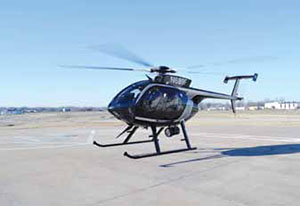
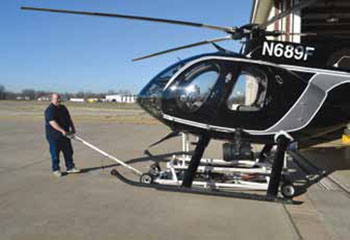
Mission of the Oklahoma City Police Department
“The men and women of the Oklahoma City Police Department are committed to enhance the quality of life and lessen the fears of all citizens. Utilizing the authority and safeguards of the constitution of the United States and the freedoms cited in the bill of rights, the laws and statutes of the state of Oklahoma and the charter and ordinances of the city of Oklahoma, we, the members of the Oklahoma City Police Department, will work cooperatively with all segments of the general public and government to provide a safe environment and preserve the peace. This partnership is drawn on the premise that our product be one of service to all citizens with special focus toward solving real and perceived problems within the community. Our remedies and resources shall be from all levels of government, working in concert, to accomplish our desired goals. Thus, as a department of, and behalf of, the city of Oklahoma City, we obligate ourselves toward becoming a catalyst for positive interaction between all services and functions to the city.”
The following interview was made possible through the efforts of Captain Dexter Nelson, office of media relations and chief spokesman, OCPD; Major Ed Hill, OCPD uniform support division commander; and Lieutenant Darla Woodruff, OCPD air support unit.
HeliMx– How long has the OCPD air support unit been in operation?
OCPD– In January 1973, the Oklahoma Crime Commission provided a six-month grant to begin the Oklahoma City Police Department’s helicopter program. The first aircraft leased was a Hughes 300C. The city purchased its own Hughes 300C in 1974 and then a second in 1977. In 1985, the unit upgraded to Hughes 500E helicopters.
HeliMx– How many helicopters do you operate and what type are they?
OCPD– We currently operate two MD500E helicopters. The aircraft were purchased in 2000 and 2002, respectively. We will purchase two new aircraft in the next 12 to 18 months. The make and model have yet to be determined.
HeliMx– How many people are in your maintenance department by job description?
OCPD– We have two full-time mechanics in the maintenance department. Carl Borgfeld has 15 years as an aircraft mechanic with the OCPD and 22 years as an A&P mechanic. He holds an IA and is a private fixed-wing and rotorcraft pilot. Marc Foreman has two years as an aircraft mechanic with the OCPD. He has 17 years as an A&P mechanic and also holds an IA. We do all the maintenance work in house, with the exception of engine and gearbox overhauls.
HeliMx– How many maintenance shifts do you operate?
OCPD– Carl and Marc primarily work Monday throught Friday, 7 a.m. to 5 p.m. They are subject to call outs.
HeliMx– What special mission equipment do you carry, if any, and how does that impact maintenance procedures?
OCPD– The MD500Es are equipped with the FLIR 8000, SX-16 NightSun, AeroComputers UC5100 mapping system and recorder. There are times when a piece of mission equipment malfunctions or needs maintenance. Since our aircraft are similarly equipped, the equipment can be transferred between aircraft if needed. When Carl and Marc are performing maintenance or an inspection, there are times when mission equipment must be removed before the work can be performed, which can add to the time the aircraft is out of service.
HeliMx– In a typical 30-day period, how many and what type of inspections do you normally perform?
OCPD – OCPD air support flies an average of 125 hours per month. That means under normal operations, we perform at least one 100-hour/annual inspection monthly.
HeliMx– What maintenance tasks are outsourced to an MRO or back to the OEM and why?
OCPD– The engines and transmissions are sent to service centers for repairs and overhauls due to the special training, tools and test cells needed to perform these duties. We also have service contracts with AeroComputers and FLIR for any needed maintenance.
HeliMx– From start to finish, what is your procedure for doing a maintenance repair or inspection?
OCPD– Carl and Marc first determine what needs to be repaired or serviced. They review the aircraft records for the time remaining on all life-limited components, inspection forms, or any other documentation about the repair or inspection. The aircraft is cleaned prior to inspections. The work is performed and then all necessary documentation is completed.
Carl and Marc have a multi-step check and balance system in place. During any repair or inspection, red flags are placed on the aircraft that indicate “remove before flight.” The flags are hung in areas such as the oil reservoir, engine, main rotor hub, tail rotor, etc., and are required to be removed prior to the aircraft going in service. Carl and Marc communicate during the repair or inspection, complete the inspection checklist and double check each other’s work. After any repair or inspection, a pilot is asked to look over the aircraft and is given a briefing of the work performed.
HeliMx– Of all the maintenance tasks that you perform, which have you found to be the most labor intensive and time consuming?
OCPD– The paperwork and record keeping are the most time consuming tasks Carl and Marc perform.
HeliMx– Do you have any lessons learned or tips you can share with our readers on a particular task that you found can improve on the maintenance process in the way of saving time, cost, materials, etc.?
OCPD– Computerize all necessary paperwork. If possible, fly the same make and model aircraft; the interchangeability of the equipment has lessened down time. Flying the same make and model also simplifies the amount of tools the mechanics need to have. Recently, we purchased the WASP inventory control program which helps us maintain an itemized inventory of our parts, etc.
HeliMx– Who performs preflight and post-flight inspections on the aircraft?
OCPD– The mechanics are required to perform a daily inspection if they are on duty. A pilot is required to perform a preflight inspection prior to flying the aircraft and also performs the post-flight inspection.
HeliMx– Who has the responsibility for assigning aircraft to flight operations?
OCPD– Maintenance personnel track component times as well as the time between inspections. We attempt to minimize down time by alternating aircraft for operations.
HeliMx– Who assigns the maintenance tasks to be done each day?
OCPD– Carl determines the maintenance tasks for the week and distributes them between himself and Marc.
HeliMx– Describe what takes place during a typical day in the life of the maintenance department.
OCPD– The mechanics arrive on shift one hour prior to the flight crew. They review the flight records from the previous shift(s) or day(s) to determine the hours flown and if there are any discrepancies which need to be addressed. Carl and/or Marc perform the daily inspection, address any aircraft discrepancies, complete necessary paperwork, order parts and consumable items, and clean the hangar and respective
work areas.
Air support unit personnel are required to maintain the facilities and the lawn. All employees participate with cleaning, mowing, etc.
HeliMx– Has the air support unit started any initiatives regarding the push towards a safety management system (SMS)?
OCPD– The air support unit conducts bi-monthly mandatory meetings. The safety officer, Sergeant Steve Cooper, conducts short training sessions during each meeting. Some topics that have been covered in the past are confined area operations, fuel exhaustion, laser strikes and safety briefings for passengers.
HeliMx– If you were looking to hire a new mechanic, what skill sets would be of the most interest to you?
OCPD– A licensed A&P mechanic with well-rounded experience and a general knowledge of aviation, with special interest in rotorcraft. An IA certification is not necessary because we can send the mechanic for that training.
From the land rush days of 1889 to a thriving metropolis in 2013, Oklahoma City has a story to tell. Today its citizens have more than 1,200 dedicated police officers and civilian employees working hard to protect them from criminal activity. The air support unit is part of this great team, providing helicopter coverage for a variety of missions. it’s helicopter support for law enforcement, “Sooner” style.
